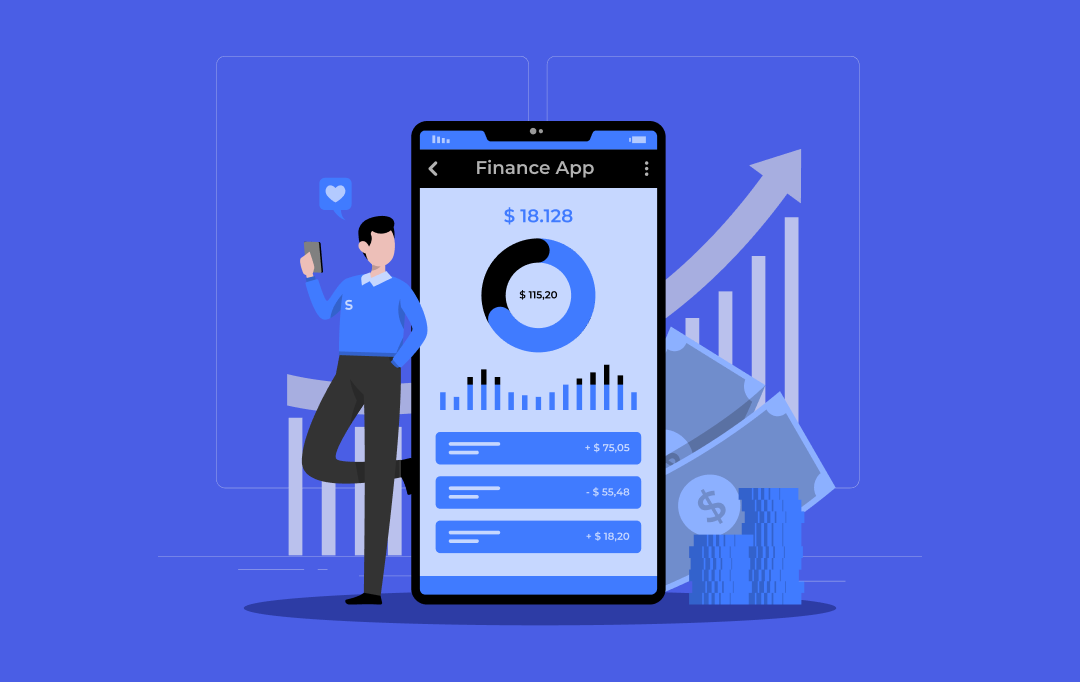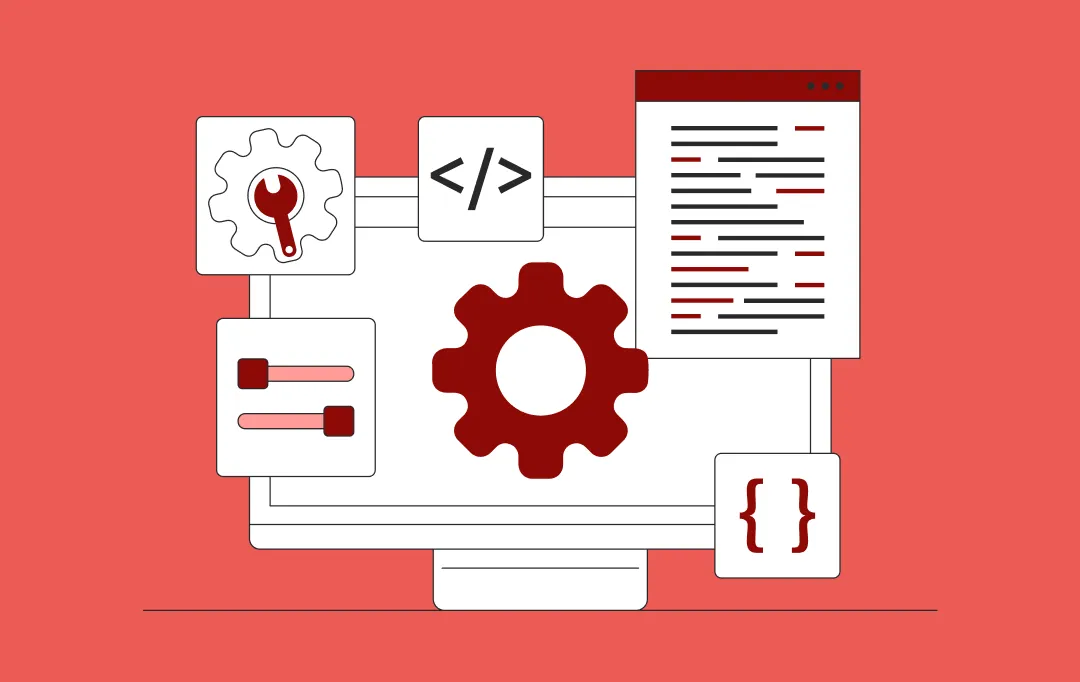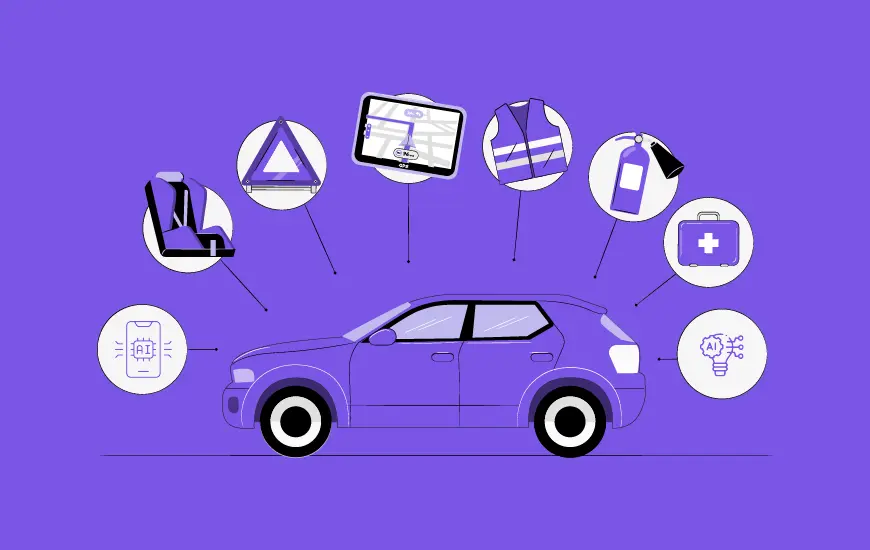- What Type of Budget Will You Require for FinTech Application Development?
- Types of FinTech Applications and Their Cost Estimate
- Banking Apps
- Lending Apps
- Personal Finance Apps
- Insurance Apps
- Investment Apps
- Payments and Money Transfer Apps
- Cryptocurrency Apps
- Robo-Advising and Stock Trading Apps
- Factors influencing FinTech App development cost
- Product Requirements
- Interactive UI/UX
- Location of the Fintech application Development Partner
- Time Required for FinTech App Development
- App Maintenance
- Advanced Technologies Used
- Tools and Languages Used
- Features Integrated
- How to Build a FinTech App?
- Must-Have Features for a High-Performing FinTech App
- Trust Our Expertise in FinTech App Development
- Top Monetization Strategies for FinTech Apps
- Subscription Model
- Transaction Fees
- Interchange Fees
- Interest & Lending Revenue
- Challenges in FinTech App Development Process
- How can Appinventiv Help in Fintech application development ?
- FAQs
- Q. How much does it cost to build a FinTech app?
- Q. How long does it take to FinTech app Development?
- Q. How does a FinTech app make money?
Appinventiv released an insider’s guide to the cost estimation of Fintech App Development in 2025. This guide enables you to explore:
- Simple App with Basic Features: $30,000-$50,000
- Medium App with Moderate Features: $50,000-$120,000
- Complex App with Advanced Features: $120,000-$300,000+
Understand other elements like integrations, and outsourcing models that impact overall expenses. Learn how different development approaches- in-house, outsourced, or hybrid—affect budgeting.
Fintech has revolutionized the financial services industry, becoming a multi-billion dollar sector in the process. This disruptive technology has enabled financial institutions to offer new and innovative services to their customers, resulting in an exponential rate of growth for the sector.
As per Mordor Intelligence, the Global FinTech Market is projected to reach $608.35 billion by 2029, growing at a CAGR exceeding 14%. This growth is propelled by factors such as increasing digitalization, rising demand for financial inclusion, advancements in technology like AI and blockchain, changing consumer behavior favoring digital banking, regulatory support, and emerging market opportunities. These drivers are fostering innovation and expanding FinTech adoption across industries worldwide.

Where do all these statistics point? Towards the significantly growing industry of FinTech apps!
Therefore, if you plan to start the development of FinTech payment app for your business, now is the best time to do so. But you might wonder about the cost implications of how to develop a FinTech app. Fret no more, as we have covered in detail all you need to know about the cost to build a FinTech app.
What Type of Budget Will You Require for FinTech Application Development?
There is no fixed FinTech application development cost. Every organization has unique requirements and objectives, which affect the cost of developing a FinTech application. The pricing of an app is influenced by various factors, including its type, features, location of the app development agency, functioning, and total development time.
A custom FinTech application development cost that provides consumers with a safe and simple online transaction method might start at a minimum price of $40,000. It can be developed in three to four months.
On the other hand, a FinTech application with a minimal user interface and functionality can cost anywhere from $30,000 to $100,000. Integrating current technologies and improved solutions in a FinTech app can cost between $60,000 and $300,000 or more, depending on the application’s complexity level.
If you also want to know how much does it cost to build a personal finance app and how to develop it, head out to
How to Build an Effective Personal Finance Application?
Types of FinTech Applications and Their Cost Estimate
As highlighted above, the financial app development costs also vary as per the type of application you want to develop. Given below are the FinTech application development cost estimates as per the popular app types – banking apps, lending apps, investment apps, personal finance apps, and insurance apps.
| Types of Apps | Development Cost (Approx.) |
|---|---|
| Banking Apps | $30,000 and $300,000 |
| Lending Apps | $50,000 and $150,000 |
| Personal Finance Apps | $50,000 and $300,000 |
| Insurance Apps | $45,000 and $200,000 |
| Investment Apps | $60,000 and $120,000 |
| Payments and Money Transfer Apps | $50,000 and $150,000 |
| Cryptocurrency Apps | $80,000 and $250,000 |
| Robo-Advising and Stock Trading Apps | $70,000 and $200,000 |
Banking Apps
All financial solutions are offered online by digital or Internet banking applications. Everything may be done online, from creating an account to applying for loans. Users no longer need to visit the branch for every issue because FinTech banking apps can handle it.
For instance, for one of our clients, a Europe-based global bank, we developed an AI-based mobile app solution that reduced manual processes by 35% and improved customer retention rate by 20%. Our client can now handle over 50% of customer service requests through a chatbot.
The cost of a FinTech banking app, based on the complexity level, can range between $30,000 and $300,000.
Another mobile-based financial service that is capable of offering a range of banking services to the users and operated exclusively through online and mobile channels is a Neobank. Check out how much does it cost to build a Neobank to get clearer cost estimates for a streamlined budget planning.
Also Read: How Much Does it Cost to Build a Neobanking App Like SoFi
Lending Apps
The P2P lending industry is expanding quickly right now. Companies are forging alliances to allow customers to apply for loans (up to a point) through digital channels. Despite the significant risk, it streamlines the lending procedure.
This sector uses technology to offer customers financial solutions through quicker and more precise processes. Smart systems that verify and authenticate identity credentials use artificial intelligence and machine learning techniques to produce error-free results.
It is simpler to predict income projections, assess the borrower’s history, determine the value of the collateral, and anticipate changes when technology is used in loan procedures. A FinTech loan app development cost should be between $50,000 and $150,000.
[Also Read: How to build a loan management system?]

Personal Finance Apps
Customers can manage their finances seamlessly thanks to personal finance apps. People may keep track of their earnings and outlays, create a budget, and make sure they stick to it. These apps serve as individual journals for keeping track of all financial transactions. The cost to build a personal finance app typically ranges between $50,000 and $300,000.
If you’re planning to merge personal finance, payments, lending, and wealth tools into one platform, here’s a full guide on the cost to build a fintech super app.
[Also Read: How Much Does It Cost to Build a Mobile Banking App Like N26?]
Insurance Apps
Insurance-related FinTech businesses are currently making efforts to digitize their current services. FinTech can provide more affordable coverage policies via apps at variable rates.
An insurance carrier can create an app for clients or agents. The end-user can access policies across several lines with an insurance app already installed. It makes interaction quicker and simpler. It offers the user quicker claims processing, which results in prompt deal closure. The cost for developing an insurance FinTech app is between $45,000 and $200,000.
(Also read: From Idea to Launch, Know How to Start a FinTech Company)
Investment Apps
These applications offer users opportunities to invest in diverse services. Certain businesses, such as mutual funds, may develop similar investment software tailored to their specific user base. Other examples of these investing solutions include trading applications, cryptocurrency exchanges, and similar platforms.
In addition, other FinTech app categories like e-portals, digital wallets, and more are also flourishing. Apps for one-stop buying, such as Amazon Pay, are becoming more common.
It is vital to understand that getting these apps developed can increase your overall budget, considering the implementation of features like real-time credit score tracking, EMI calculators, data analytics, etc.
Now that you have a fair idea about how much it costs to build a FinTech app depending on various application types, it’s time to look into detail the various other factors that impact the final pricing.
[Also Read: How to build a financial literacy and money management app like Zogo]
Payments and Money Transfer Apps
Payments and money transfer apps streamline financial transactions, enabling users to send and receive money securely and instantly. These apps often include features like multi-currency support, fraud detection, real-time notifications, and bank integrations, ensuring smooth transactions across borders.
The cost of developing a payment & money transfer app is around $50,000 – $150,000. This varies based on security measures, third-party integrations, and scalability requirements.
Cryptocurrency Apps
Cryptocurrency apps facilitate buying, selling, and storing digital assets while ensuring high security and regulation compliance. These apps integrate blockchain technology, decentralized wallets, and real-time price tracking, offering a seamless trading experience.
The cost of developing a cryptocurrency app is around $80,000 – $250,000, depending on blockchain integration, security protocols, and compliance requirements.
Robo-Advising and Stock Trading Apps
Robo-advisory and stock trading apps provide automated financial guidance and investment management, enabling users to trade stocks, ETFs, and other assets effortlessly. These apps incorporate AI-driven recommendations, real-time analytics, and secure payment gateways.
The cost of developing a robo-advisory and stock trading app is around $70,000 – $200,000, influenced by AI capabilities, data security, and market integration features.
Also Read: Robo-Advisor Platform Development – Costs, Benefits, and Process for FinTech Businesses
Factors influencing FinTech App development cost
The calculation of FinTech application development cost is not straightforward. There are a lot of factors and conditions that have a huge impact on the overall budget. Some of those factors and FinTech app features are-

Product Requirements
The app requirements are the first component that affects FinTech application development costs. There are two aspects to app requirements which are-
The scope of work: This aspect is quite simple to understand. The collection of features that the financial application must have or the effort necessary to develop these features make up the scope of work. The project size and number of hours required to finish development increase with the scope.
The level of product complexity: Project complexity, on the other hand, refers to how complex a software product’s concept is. Building, testing, and deploying a product is more difficult if its logic and concept are sophisticated.
Non-functional requirements are also important. They comprise several traits that describe the program’s operation, such as scalability, security, usability, dependability, performance, etc. They are significant because they have an impact on customer satisfaction.
Interactive UI/UX
It’s worthwhile to try creating a financial app with a user-friendly interface. The user experience is improved by the seamless app design. An app needs to be constructed properly, from choosing the appropriate fonts using simple vocabulary and white space appropriately. An effective app enables users to find the information they require rapidly. This is also a must if you want your app to be a hit. So, investing in a user-friendly interface for your app can never go wrong.
(Also read: How Much Does It Cost to Build A FinTech App Like Revolut)
Location of the Fintech application Development Partner
The location of the company you have partnered with to develop your FinTech app is another significant factor affecting the cost. The cost depends on the hourly rate of the team of 4–7 specialists and the time taken to produce an app in a specific country. A FinTech application development specialist in a country like the US typically charges more than a specialist in India.
| Location | Hourly Rates of Developers (Approx) |
|---|---|
| North America | $25 – $35 |
| Latin America | $25 – $35 |
| Europe | $35 – $65 |
| India | $20 – $25 |
| Africa | $25 – $30 |
Time Required for FinTech App Development
Finally, remember that time is of the essence. The FinTech application development cost will be significantly influenced by the delivery time. Increased teamwork will be necessary for rapid prototyping and development. As a result, the team that works on the project with a shorter delivery timeframe will incur a higher cost.
Total time required to build a financial application also depends on the type of mobile app that is being developed. Given below is a time estimation based on the five types of FinTech apps discussed above:
| App Type | Development Time (Approx) |
|---|---|
| Banking | 2,000-3,500 hours |
| Personal Finance | 1,500-2,500 hours |
| Lending | 2,000-2,500 hours |
| Investment | 1,500-2,500 hours |
| Insurance | 2,000-3,000 hours |
App Maintenance
You must take maintenance expenditures into account while calculating the cost to build a FinTech app. Custom financial app development is a continuous process. After an app is deployed, its maintenance with respect to the regular upkeep becomes top priority.
Apart from this, the features and functionalities of an app should also be regularly updated to keep the business scaling. All this, however, adds to the overall cost of the application.
Advanced Technologies Used

Digital Analytics
One of the most effective components of a FinTech app is digital analytics. It is more important than ever to analyze consumer financial data and offer necessary insights. Users of a FinTech app may simply access and keep track of their financial activity thanks to this functionality.
An end-user can access information about their purchases, savings, and investments. Users may create transactional messages, monitor reports, and reach savings objectives more quickly with data analytics. The more complex the digital analytics, the more development costs there would be to build a FinTech app.
[Also Read: Does your FinTech business need data analytics outsourcing?]
Blockchain
Blockchain is a crucial component that can affect the cost to build a FinTech app. It demands primary attention when it comes to developing finance apps. Peer-to-peer payments can rise with integration of blockchain in FinTech apps. By including it in the app, consumers will have complete transparency and may complete transactions in a matter of minutes.
With a Blockchain-powered FinTech app, everyone involved in the trades can save significant money and time. Additionally, the system can enable quick data sharing across several platforms via an interface similar to that used by banks and other financial organizations.
[Also Read: Why are Banks Adopting Blockchain Technology?]
Artificial Intelligence
Another area of technology that influences the cost to develop a FinTech app is artificial intelligence. Most financial applications often rely on extensive processing requirements. Most FinTech apps support the usage of artificial intelligence in various ways. AI, for instance, enables user-friendly chatbots, sophisticated financial planning, the identification of fraudulent conduct, and swift, effective, and trustworthy transactions in FinTech applications.
For one of our clients, Mudra, for instance, we developed an AI-based budget management application. The app with the help of a chatbot keeps a tab on the expenses that a user makes and informs them when their budget gets out of hand. The platform does all this while keeping the process fun and interactive for the millennial user base who gets bored easily.

Tools and Languages Used
The cost to make a FinTech app is also strongly influenced by the technological stack. To arrive at a correct price estimation, you must choose the programming language and tools you want to employ for your FinTech application development project.
In general, there are three different sorts of applications, and each one needs a particular technology stack and entails a different cost.
Native applications
Apps for the FinTech industry only made for one platform, either iOS or Android, are known as native apps. Apple Xcode, SWIFT, Objective C, and the iOS SDK are the technologies used to create native iOS apps. Android Studio, Java, Kotlin, and the Android SDK are frequently used in native Android apps. Developers prefer to utilize the Solidity language when creating smart contracts (for the Ethereum platform).
Cross-platform applications
Cross-platform apps are created with Native, C#, and Flutter to support several mobile platforms.
Hybrid applications
These apps support both native apps for Android and iOS devices as well as web apps for web browsers. The creators of hybrid apps employ tech stacks like PhoneGap or HTML 5.
Features Integrated
Another factor that highly impacts the cost of building a FinTech app is the number and complexity of features integrated into the app. Some of the FinTech app features that are typically included in the app are:

While we have talked in detail about custom FinTech application development costs and associated factors, it’s finally time to look at how to build a FinTech app.
How to Build a FinTech App?
The FinTech application development process involves several stages that a business must diligently follow to develop a FinTech software that is capable of garnering results.
- Requirement gathering: The stage involves putting down all the requirements of your project with your hired FinTech AI app development company.
- App design: The next stage involves designing the app while making sure of a UI/UX that garners users’ interest.
- MVP development: At this stage, the features are coded, technologies are added, and best security methods are integrated to develop an app that is the best representation of your project’s USP.
- Testing: The developed MVP of your project is tested to ensure it is free of all bugs.
- Deployment: The app is finally deployed on your chosen platform – iOS, Android, or both.
- Maintenance and updation: Based on the initial feedback of the users, the app is constantly updated with new features and functionalities to keep the product scaling.
In case, you want to know about the FinTech development process in more detail, head on to our comprehensive business guide to financial software development.
While we have looked at the quick steps of developing a financial application, let’s now look at the two major challenges that usually hamper the development process.
Must-Have Features for a High-Performing FinTech App
A successful FinTech app combines security, efficiency, and user-friendly design to streamline financial transactions. Here are some of the top features of a FinTech app that enhance user experience, ensure regulatory compliance, and drive seamless financial operations.
- Security: Robust encryption, multi-factor authentication, and fraud prevention measures safeguard financial data and ensure secure transactions.
- Dashboards: Real-time, interactive dashboards offer users a comprehensive view of their finances, helping them monitor expenses, investments, and savings effortlessly.
- Voice Integration: AI-driven voice assistants provide a hands-free banking experience, enabling users to access account details, initiate transactions, and receive financial insights through voice commands.
- Payment Gateway Integration: Smooth and secure payment gateway integration supports various payment methods, ensuring fast, hassle-free, and reliable transactions.
Trust Our Expertise in FinTech App Development
The FinTech industry is undergoing a revolutionary shift fueled by AI, blockchain, and digital banking innovations. As financial services become more intelligent and user-centric, the future of FinTech lies in seamless experiences, fortified security, and strict regulatory compliance.
Emerging trends like embedded finance, decentralized finance (DeFi), and AI-powered financial management are transforming how people manage and interact with money, making transactions faster, safer, and more accessible than ever.
At Appinventiv, we are driving this transformation, delivering cutting-edge, secure, and regulation-compliant FinTech solutions. Our expertise spans digital banking, lending platforms, payment solutions, and financial literacy apps—with successful projects like Mudra and EdFundo showcasing our ability to develop industry-leading applications.
Ready to build the next breakthrough in FinTech?
Connect with our experts today to explore the possibilities!
Top Monetization Strategies for FinTech Apps
Maximizing revenue in FinTech requires a strategic approach that balances user value with profitability. By leveraging diverse monetization methods, you can ensure sustainable growth while enhancing financial services for your users.
Subscription Model
Charge users a recurring fee for access to premium features, advanced financial tools, or personalized insights. This ensures steady revenue while enhancing user experience with exclusive services.
Transaction Fees
Earn revenue by taking a small percentage from each transaction processed through the app, such as fund transfers, bill payments, or trades. This model works well for payment processing and financial services.
Interchange Fees
Generate income whenever users make purchases using a debit or credit card linked to your app. A portion of the transaction fee, paid by merchants, contributes to your earnings without directly charging users.
Interest & Lending Revenue
Monetize by offering loans, credit lines, or BNPL services and earning interest on repayments. This approach benefits both users seeking flexible financing and FinTech platforms looking for sustainable revenue.
Challenges in FinTech App Development Process
Financial technology advancements in recent years have revolutionized finance and altered how we manage it. Companies in the FinTech sector are leading these developments, but there may be difficulties that can be addressed from FinTech app consulting.
Two different kinds of problems come with launching a FinTech app: strategic and technical.
Getting the pitch deck ready, getting finance, and complying with regulations are all examples of strategic hurdles. Rather than issues with the program, many problems caused by organizational structure come under strategic challenges. Compliance with national and international security protocols, including PCI-DSS, can be a significant strategic issue that organizations may encounter.
Technical difficulties are closely related to the FinTech mobile application development conception, creation, and promotion. The product’s engineering and technology cause these difficulties.
Digital identities, data ownership, cloud migration, and third-party components are some of the technical challenges one can face in the process of financial app development.
Working with a fintech consulting services provider can make it easier to handle both strategic and technical challenges. These experts can help you with things like meeting compliance rules, preparing for funding, and solving technical problems during app development. This way, your FinTech app can stay secure, follow all regulations, and be ready to succeed in a competitive market.
[Also Read: How FinOps helps in cloud cost optimization ]
How can Appinventiv Help in Fintech application development ?
Appinventiv is a leading FinTech app development service company that has deep expertise and experience in building robust financial software that comply with all the regulatory requirements. Our FinTech experts are also adept at meeting all security challenges and always follow a security-first approach.
So, if you too are planning to build or are concerned about the cost to build a FinTech app, don’t wait, reach out to our experts for complete clarity now.
FAQs
Q. How much does it cost to build a FinTech app?
A. To summarize, the cost of making a FinTech app may range from $30,000 to $250,000 depending on the overall complexity of the application.
Q. How long does it take to FinTech app Development?
A. Building a simple FinTech app may take 3-6 months. The project’s complexity, the needs, and the kind of FinTech application development solutions you choose all impact the timeline needed to create a FinTech app that may even go up to 12-18 months.
Q. How does a FinTech app make money?
A. The most common and significant approach for FinTech apps to monetize their services is showing advertisements within the app. Third-party ad networks pay app owners when users click on their ads. Other sources of revenue may also include paying for subscriptions and in-app purchases.


- In just 2 mins you will get a response
- Your idea is 100% protected by our Non Disclosure Agreement.

How Much Does It Cost to Build a Fintech Super App
Key Takeaways Building a fintech super app costs between $40,000 and $400,000, depending on modules, compliance, and integrations. Backend architecture, compliance, and third party APIs are the biggest cost drivers in any super app build. AI, lending, investments, and insurance instantly push the project into the enterprise cost range. Hidden costs like audits, cloud hosting,…

A Complete Business Guide To Wealth Management Software Development
Key takeaways: The "great wealth transfer" is redefining client expectations. Legacy platforms cannot meet the digital-first demands of the next generation of HNWIs. Modern wealth management software is not an IT expense. It is a core business driver for operational efficiency, client retention, and scalable compliance. Artificial intelligence and machine learning are essential for delivering…

How to develop a high frequency trading software? Process, features, costs
Key takeaways: Build process, not just code: HFT success = a staged roadmap (discovery → architecture → MVS → core build → test → launch → monitor) where decisions are validated with real latency and risk data at every step. Architecture beats hype: Deterministic low latency comes from co-location, kernel bypass/FPGA, clean market-data pipelines, and…




































